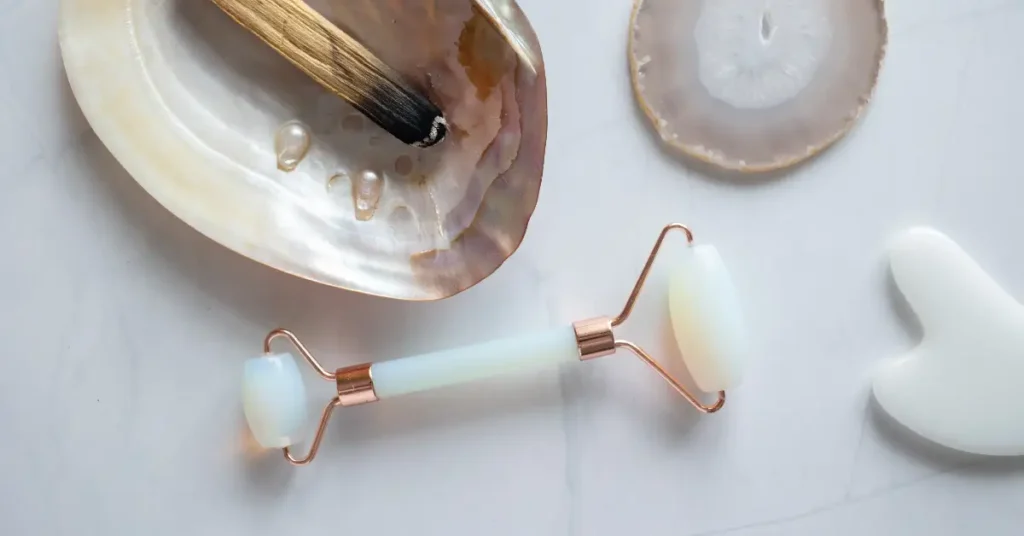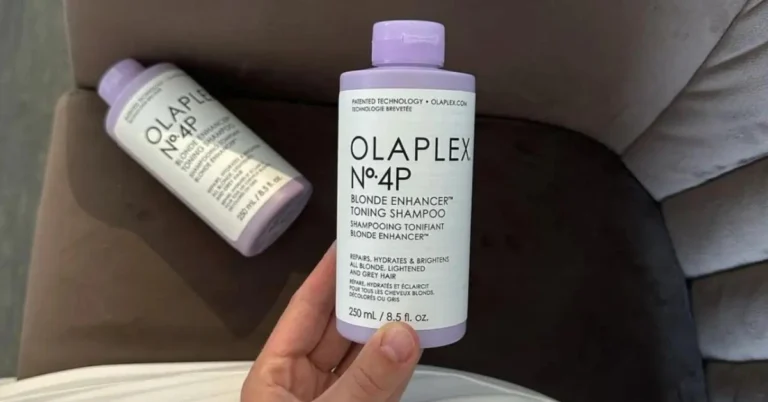Are you constantly troubled by ongoing skin problems? Searching for skincare remedies that truly work? Search no more! I’ve found a groundbreaking answer that you simply can’t ignore – the AHA and niacinamide combo. Get ready for a remarkable change in skincare that will tackle your issues in a manner unlike any before.
Imagine a skincare solution that truly lives up to its promises, a dynamic duo that works wonders for your skin. Enter the buzz-worthy combination of AHA and niacinamide, taking the beauty world by storm.
The remarkable benefits will leave you eager to try it for yourself. Get ready to unveil the secret to radiant, flawless skin and bid farewell to the years of searching for the perfect remedy.
Table of Contents
AHA And Niacinamide
For those who may not be familiar, AHA stands for alpha-hydroxy acid, while niacinamide is a form of vitamin B3. AHA is a chemical exfoliant that can help to remove dead skin cells and smooth out the texture, while niacinamide has been shown to improve skin elasticity, reduce inflammation, and even out skin tone. Together, these two ingredients can pack a powerful punch when it comes to achieving healthy, glowing skin.
So, what are some of the benefits of using AHA and niacinamide together? For starters, this combination can help to improve the appearance of fine lines and wrinkles, as well as reduce the appearance of pores.
It can also help to brighten and even out skin tone, making it a great option for those dealing with hyperpigmentation or dark spots. Plus, because AHA and niacinamide work to exfoliate and renew the skin, they can help to give you a more youthful, radiant complexion.
Understanding AHA
If you’re looking for a way to rejuvenate your skin and reduce the signs of aging, you’ve probably heard of alpha-hydroxy acids (AHAs). AHAs are a group of compounds that are commonly used in skincare products to exfoliate the skin and improve its texture. AHAs are also known to be effective in reducing the appearance of fine lines, wrinkles, and age spots.
Different types of AHAs and their specific effects on the skin:
- Glycolic Acid: This is the most commonly used AHA in skincare products. It is derived from sugarcane and has a small molecular size, which means it can penetrate the skin deeply. Glycolic acid is known to be effective in reducing the appearance of fine lines, wrinkles, and age spots.
- Citric Acid: This AHA is naturally found in citrus fruits like lemons, oranges, and limes. Citric acid is known for its mild exfoliating properties, making it suitable for sensitive skin types. It gently removes dead skin cells, promoting a smoother and brighter complexion without causing excessive irritation.
- Lactic Acid: This AHA is derived from milk and is known to be gentler on the skin than glycolic acid. Lactic acid is effective in exfoliating the skin and improving its texture. It is also known to be effective in reducing the appearance of fine lines and wrinkles.
- Mandelic Acid: This AHA is derived from almonds and is known to be gentle on the skin. Mandelic acid is effective in exfoliating the skin and improving its texture. It is also known to be effective in reducing the appearance of fine lines and wrinkles.

This pie chart shows which AHA is most popular in 2023
AHAs work by breaking down the bonds between dead skin cells, allowing them to be easily removed from the surface of the skin. This process helps to reveal the fresh, healthy skin cells underneath, giving the skin a more youthful and radiant appearance.
When combined with niacinamide, AHAs can be even more effective in improving the appearance of the skin. Niacinamide is a form of vitamin B3 that is known to be effective in reducing the appearance of fine lines, wrinkles, and age spots. It also helps to improve the skin’s texture and reduce the appearance of pores.
Benefits of AHA

Are you tired of dull, tired-looking skin? Do you want to achieve a brighter, more radiant complexion? Look no further than alpha-hydroxy acids (AHAs)! AHAs are a group of plant and animal-derived acids that can help you achieve the glowing skin of your dreams.
I’ve personally experienced the benefits of AHA and niacinamide, and I can’t recommend them enough. Here are just a few of the amazing benefits of using AHAs in your skincare routine:
- Exfoliation: AHAs work by breaking down the bonds between dead skin cells, which allows them to be easily removed from the surface of your skin. This exfoliation process can help to brighten your complexion, reduce the appearance of fine lines and wrinkles, and even out skin tone.
- Hydration: AHAs can also help to hydrate your skin by attracting water to the surface. This can leave your skin feeling soft and supple, and can also help to reduce the appearance of fine lines and wrinkles.
- Acne-fighting: AHAs can help to unclog pores and reduce the appearance of acne by removing dead skin cells and excess oil from the surface of your skin.
- Brightening: AHAs can also help to brighten your complexion by removing dull, dead skin cells and revealing the fresh, glowing skin underneath.
- Anti-aging: AHAs can help to reduce the appearance of fine lines and wrinkles by stimulating collagen production in the skin.
Potential Side Effects when Using AHAs
As someone who has struggled with acne and hyperpigmentation, I know firsthand the benefits of incorporating AHAs and niacinamide into my skincare routine. However, it’s important to note that there are potential side effects when using AHAs with niacinamide.
One of the most common side effects is skin irritation, which can manifest as redness, dryness, or flaking. This is because AHAs work by exfoliating the top layer of skin, which can leave it more vulnerable to irritation. Niacinamide can help minimize these side effects by replenishing the skin barrier and increasing its water-binding ability.
Another potential side effect is contact dermatitis, which is an allergic reaction to the ingredients in the products. This can cause itching, burning, and even blisters. It’s important to patch-test any new products containing AHAs and niacinamide before applying them to your entire face.
Remember: AHAs can increase your skin’s sensitivity to the sun, so be sure to wear sunscreen with at least SPF 30 when using these products.
Understanding Niacinamide
When it comes to skincare, there are a lot of ingredients out there that promise to do wonders for your skin. One ingredient that has been gaining popularity lately is niacinamide. But what exactly is niacinamide, and how does it work with other popular skincare ingredients like AHA?
Niacinamide, also known as Vitamin B3, is a water-soluble vitamin that has been shown to have several benefits for the skin. It can help to improve the skin’s texture and tone, reduce the appearance of fine lines and wrinkles, and even help to reduce the appearance of hyperpigmentation.
But what about niacinamide and AHA? Can they be used together? The answer is yes! Niacinamide and AHA can work together to help improve the overall health and appearance of your skin.
AHA, or alpha-hydroxy acid, is a type of acid that is commonly used in skincare products to help exfoliate the skin and improve its texture. When used in conjunction with niacinamide, AHA can help to improve the skin’s texture and tone, while niacinamide can help to reduce the appearance of hyperpigmentation and other skin discolorations.
Benefits of Niacinamide

If you’re looking for a way to improve your skin’s texture, pigmentation, dryness, dullness, wrinkles, and acne, then you might want to consider incorporating niacinamide into your skincare routine. Niacinamide, also known as vitamin B3, is a water-soluble vitamin that has been shown to provide a wide range of benefits for the skin when used topically.
One of the most significant benefits of niacinamide is its ability to enhance the function of your skin’s lipid barrier. This layer of water and oil protects your skin and helps to lock in moisture while keeping pollutants and other potential irritants out. By improving the function of this barrier, niacinamide can help to keep your skin hydrated and less sensitive.
Niacinamide can also help to regulate oil production, making it ideal for anyone with a little extra shine or congestion. By decreasing the amount of oil on the skin’s surface, niacinamide can help to reduce the amount of fuel available to acne-causing bacteria.
In addition to these benefits, niacinamide has been shown to have anti-inflammatory properties, which can help to calm redness and irritation. It can also help to build keratin, a type of protein that keeps your skin firm and healthy, and improve the appearance of fine lines and wrinkles.
Personally, I have found that incorporating niacinamide into my skincare routine has made a noticeable difference in the overall health and appearance of my skin. It feels more hydrated, looks brighter, and is less prone to breakouts.
How to Use AHA and Niacinamide Together

Are you tired of using skincare products that don’t deliver the results you’re looking for? As someone who has struggled with acne and hyperpigmentation, I know how frustrating it can be to find the right combination of ingredients that work for your skin. That’s why I’m excited to share my personal experience with combining AHA and niacinamide, two powerhouse ingredients that can help transform your skin.
AHA and Niacinamide in Skincare Routines
Before we dive into the benefits of using AHA and niacinamide together, let’s talk about their compatibility. Some people believe that combining these two ingredients can lead to skin irritation or decreased efficacy. However, according to skincare experts, AHA and niacinamide can be used together safely and effectively.
Potential Synergistic Effects
So, what happens when you combine AHA and niacinamide in your skincare routine? The answer is potential synergistic effects.
AHA, which stands for alpha-hydroxy acid, is a chemical exfoliant that helps to remove dead skin cells and unclog pores. Niacinamide, on the other hand, is a form of vitamin B3 that can help to reduce inflammation, brighten the skin, and improve the appearance of fine lines and wrinkles.
When used together, AHA and niacinamide can work in harmony to improve overall skin texture and tone. The exfoliating properties of AHA can help to increase the absorption of niacinamide, allowing it to penetrate deeper into the skin and deliver its benefits more effectively.
Potential Side Effects
As someone who’s been experimenting with skincare for years, I can tell you that combining different active ingredients can be a game-changer. However, it’s important to be aware of the potential side effects when combining different ingredients. In this section, I’ll be discussing the potential side effects of using niacinamide with AHA.
One of the most common side effects of using niacinamide with AHA is skin irritation. This can manifest as redness, dryness, or flaking of the skin. In some cases, it’s also possible to develop contact dermatitis, which is an allergic reaction to the ingredients in the products.
It’s important to note that not everyone will experience side effects when using niacinamide with AHA. However, if you have sensitive skin or are prone to allergic reactions, it’s best to start with a lower concentration of both ingredients and gradually increase the concentration over time.
Concentrations and Application Methods
If you’re interested in incorporating AHA and niacinamide into your skincare routine, it’s important to use them in the right concentrations and application methods. Here are some general guidelines to follow:
- AHA: Start with a low concentration (around 5%) and gradually increase as your skin becomes accustomed to it. Apply AHA to clean, dry skin and follow with a moisturizer and sunscreen.
- Niacinamide: Look for products with a concentration of at least 2-5%. Apply niacinamide after cleansing and toning, and follow with your other skincare products.
- Combination: Apply AHA first, wait 20-30 minutes, then apply niacinamide.
Remember: Everyone’s skin is different, so it’s important to patch-test new products and listen to your skin’s needs
Personal Experiences and Skincare Routines
As someone who struggles with acne-prone and oily skin, incorporating AHA and niacinamide into my skincare routine has been a game-changer. Not only have these two ingredients helped to clear up my skin, but they have also improved its texture and overall appearance.
Today on the feed, I’m sharing my thoughts on SkinFix’s new AHA/BHA Niacinamide Exfoliating Pads. You can use them for face and body 👀
— Sean Garrette (@seangarrette) August 5, 2021
Read the full review here: https://t.co/egRw2vHuCM + please like and share! 🤎 pic.twitter.com/yJVdfFW8i9
My Review
I’ve had great results from using The Ordinary’s Glycolic Acid 7% Toning Solution followed by their Niacinamide 10% + Zinc 1% serum.
The toner helps to exfoliate and brighten my skin, while the serum helps to regulate oil production and reduce the appearance of pores. Overall, I’ve noticed a significant improvement in my skin’s texture and clarity since incorporating these products into my routine.
Tips and Tricks for Maximizing the Benefits

To get the most out of AHA and niacinamide, it’s important to use them consistently and in the right order. I typically use my AHA toner in the evening after cleansing, followed by my niacinamide serum. I also make sure to wear sunscreen during the day, as both of these ingredients can make your skin more sensitive to the sun.
Another tip: Start slowly when incorporating these ingredients into your routine. Begin by using them once or twice a week and gradually increase frequency as your skin adjusts. And as always, be sure to patch-test any new products before using them all over your face.
Overall, incorporating AHA and niacinamide into your skincare routine can have a big impact on the appearance and health of your skin. Just be sure to use them consistently and in the right order for the best results.
AHAs and Niacinamide: A Recap
If you’re like me, you’re always on the lookout for the next big thing in skincare. That’s why I was excited to learn about the benefits of using AHAs and niacinamide together.
AHAs, or alpha-hydroxy acids, are a group of acids that are commonly used in skincare products to exfoliate the skin. Niacinamide, on the other hand, is a form of vitamin B3 that has been shown to improve the appearance of fine lines, wrinkles, and uneven skin tone.
When used together, AHAs and niacinamide can provide a range of benefits for the skin. These include:
| Benefits | Possible Side Effects |
|---|---|
| Smoother, more even skin texture | Mild irritation or redness |
| Reduced appearance of fine lines and wrinkles | Increased sensitivity to the sun |
| Brighter, more radiant skin | Dryness or flakiness |
Personally, I’ve found that using AHAs and niacinamide together has made a noticeable difference in the appearance and texture of my skin. My skin looks brighter and more even, and I’ve noticed a reduction in the appearance of fine lines and wrinkles.
Of course, it’s important to remember that everyone’s skin is different, and what works for me may not work for you. If you’re considering adding AHAs and niacinamide to your skincare routine, it’s a good idea to start with a low concentration and gradually work your way up to avoid any potential side effects.
FAQ

Does AHA go before niacinamide?
Yes, apply AHA first, wait 20-30 minutes, then apply niacinamide
How often can I use the ordinary AHA 30%?
You can use The Ordinary AHA 30% once or twice a week to avoid over exfoliation and irritation.
Can I use niacinamide serum everyday?
Yes, you can use a niacinamide serum daily. It is generally well-tolerated and can be incorporated into your daily skincare routine.
When should I avoid niacinamide?
You should avoid niacinamide if you have an allergy or sensitivity to the ingredient. Additionally, avoid using it with products containing vitamin C in high concentrations, as it may reduce the efficacy of both ingredients when used together.
How long should I wait to apply moisturizer after niacinamide?
Wait 30 seconds to a minute before applying moisturizer after niacinamide, this brief wait time allows the niacinamide to fully absorb into the skin before applying other products.
Do I moisturize after AHA?
Yes, it’s essential to moisturize after using AHA to help replenish the skin’s moisture barrier and prevent excessive dryness or irritation. AHA can be drying, so follow up with a suitable moisturizer to keep your skin hydrated and balanced.
If you liked this blog article about the question: “AHA And Niacinamide: Youthful Glow In 2023?” don’t forget to leave us a comment down below to tell us about your experience.





